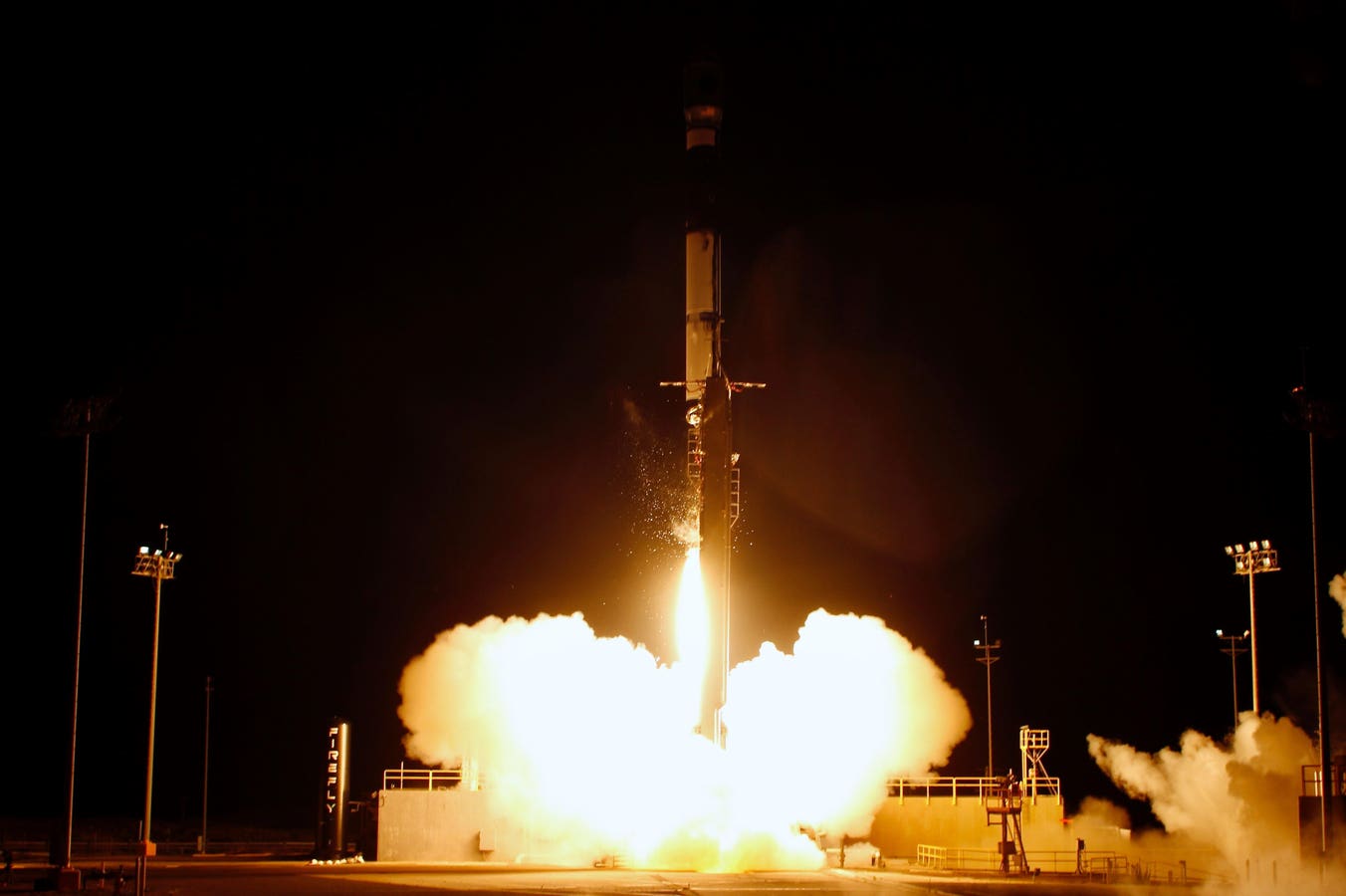Getting satellites into orbit is a complicated process. It usually takes months to prepare a spacecraft for launch, and the spacecraft itself was typically ordered years earlier.
That won’t do in wartime. U.S. military forces are so dependent on satellites for communications, reconnaissance, attack warnings and even weather reports that if they are lost or degraded in wartime, they need to be replaced quickly.
The Space Force is implementing a multifaceted program to defend its satellites against attack, but losses in a conflict with other great powers have to be assumed. For example, a nuclear blast in low earth orbit could disable a dozen satellites planned for the Pentagon’s space transport and tracking layer.
What to do?
In September, two space companies demonstrated a promising solution, in a military mission designated “Victus Nox” (‘conquer the night’ in Latin). With funding provided by the Space Systems Command, Millennium Space and Firefly Aerospace managed to prepare a payload and get it into orbit in days, breaking records for such a mission.
Millennium Space is the small-satellite subsidiary of Boeing
BA
Victus Nox was essentially an experiment to see how quickly the Space Force could orbit a satellite capable of monitoring tactical developments above the atmosphere. The goal was to compress the timelines required for integrating, launching, and bringing to operational status the satellite.
The project proceeded under the rubric of “responsive space,” meaning the ability to quickly replace, substitute or find a commercial source for satellite-generated data critical to military operations.
Compared with the pace of past military-space projects, the experiment was a spectacular success. Less than a year after ordering the satellite from Millennium, the company and launch provider Firefly were notified of a 60-hour window for satellite activation on September 8, followed by a 24-hour launch preparation window on September 13.
The two windows were preceded by a “hot standby” notification alerting the companies that a launch order could come at any time. That mirrors the circumstances in which a fast launch might be requested during wartime.
All of the myriad steps required from transport to the launch complex to software updates to the mating of satellite with launcher were accomplished within the allotted time.
The satellite lifted off on Firefly’s Alpha launch vehicle on September 14, and within hours was in orbit and operational, delivering what the military calls space domain awareness.
That kind of rapid turnaround is unheard of in the space business, but it’s the kind of speed the Space Force might need to save lives in wartime. After all, if a military unit deployed in a war zone can’t communicate or receive attack warnings due to a loss of overhead support, it won’t take long for the unit’s battlefield performance to falter.
Not only did Victus Nox demonstrate the feasibility of implementing a responsive launch posture later in the decade, but as Courtney Albon reported on the Defense News network, Space Force personnel learned valuable lessons about further compressing the timeline for getting assets into orbit during an emergency.
For instance, planners need to assure that launch pads are available as soon as they are needed, and that the logistics of getting satellites to the site where they are mated with the launch vehicle do not slow the process.
The September activation window provided sufficient time to transport the spacecraft 165 miles from Millennium’s assembly site in El Segundo, California, to Firefly’s site at the Vandenberg Air Force Base launch complex. A future responsive space posture would likely have satellites stored closer to the launch complex to speed the process.
It is emblematic of the Space Force’s culture that after executing a record-breaking mission, it is already looking for ways to further accelerate the process. The entire organization is pervaded by a sense of urgency about expanding and sustaining U.S. military advantages in space.
Millennium is working to apply its smallsat technology to other national-security missions beyond space awareness. Firefly plans to use its Alpha vehicle to launch payloads for Lockheed Martin
LMT
Victus Nox looks to be a model of how America’s joint force will leverage a new generation of space enterprises in the years ahead. As threats evolve, the space community is developing better-faster-cheaper ways of meeting military needs.
Read the full article here





